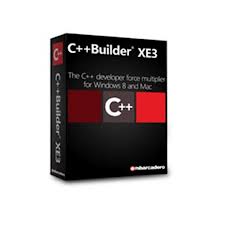| ウェブサイトをできるだけ多くの言語で地域化しようとしていますが、このページは現在Google Translateにより機械翻訳されています。 | 終了 |
-
-
製品
-
資料
-
サポート
-
会社
-
ログイン
-
.dbg ファイル拡張子
開発者: Dr. Bjarne Stroustrupファイルの種類: C++ Symbolic Debugging Information Fileあなたがで終わるファイル拡張子を持つファイルを持っているので、あなたはここにいる .dbg. ファイル拡張子を持つファイル .dbg 特定のアプリケーションだけで起動することができます。それがいる可能性があります .dbg ファイルは、それらが全く観察されることを意図していないことを意味するデータ·ファイルではなく、ドキュメントまたは媒体である。何です .dbg ファイル?
C ++シンボルデバッグ情報ファイルは、ソースコードの機能をテストするために開発された多くのデバッグアプリケーションによって使用される。これらのC ++のデバッグツールは、コードの機能のシミュレーション中に発生する可能性のエラーやバグを強調表示することができます。これらのバグやエラーはテキストフォーマットの仕様でエンコードされたデバッグログ·ファイルにダンプされます。これらのログファイルは、参照データとして、これらのログファイルに格納されたデータを使用して、エラーやバグを修正するために開発者が使用することができる。 C ++シンボルデバッグ情報ファイルの内容は、DBGファイル形式でこれらのデータを格納するために使用される符号化規格と一体化されている。を貼付.DBG拡張子、C ++シンボリックデバッグ情報ファイルは、初期化に失敗したか、テスト·シミュレーション中に発生したエラーの原因である可能性がコードの特定の行の正確な位置を特定することができます。開く方法 .dbg ファイル?
起動 .dbg ファイル、または、それをダブルクリックして、PC上の他のファイル、。あなたのファイルの関連付けが正しく設定されている場合は、意味のアプリケーションが開くように .dbg ファイルには、それを開きます。それはあなたが適切なアプリケーションをダウンロードしたり購入する必要があります可能性があります。それは、あなたのPC上で適切なアプリケーションを持っている可能性もありますが、 .dbg ファイルはまだそれに関連付けられていない。このケースでは、開こうとすると、 .dbg ファイルは、そのファイルの正しい1であるアプリケーションは、Windowsを伝えることができます。それ以降、開く .dbg ファイルには、適切なアプリケーションを開きます。 .DBGファイルの関連付けのエラーを修正するには、ここをクリックしてください開くアプリケーション .dbg ファイル
 Embarcadero C++Builder
Embarcadero C++BuilderEmbarcadero C++Builder
Embarcadero C++ is a software used for creating application for Window XP, Vista, Window7 and Even Window 8. This software may also create application for Mac OS X Mountain Lion, Surface Pro, Retina displays and Slates are also included, all this will be under C++ codebase. The software allows the user to develop application for Windows and gives no problem in Compiling in a Mac machine with its Visual Integrated Development Environment (IDE) and numerous components which are available for the convenience of the developer. The software provides the user with Metropolis User Interface which makes the developer create new app for Windows 8 user interface style including the enablement of the touch system, the live title support, the components of the tablet sensors, and as well as the x 86 PC running Windows 8. This software runs in Window server 2008, Vista (SP2), Windows 7 (SP1)32-bit and 64-bit, Window 8 (32-bit and 64-bit). The Personal Computer running Windows should connected to Mac OS 10.8 for developing OS X applications. FoxPro
FoxProFoxPro
FoxPro, a procedural programming language and database management system created by Fox Software, has been widely used even before it was turned over to Visual FoxPro. It still enjoys a strong support from its community of programmers and users up to this day. FoxPro versions 2.0, 2.5 and 2.6 are compatible with Mac, DOS and Windows 3.1 to XP. Version 2.6 is compatible also with Linux and Free BSD, SCO Unix and Windows 2000. FoxPro 2 used Rushmore, an optimizing engine that used indices to look for matching expressions, to accelerate data updating and data retrieval. FoxPro 2 was built originally on Watcom C++ that has its own extensor making it the most up-to-date technology at that time. It could access expanded and extended memory making it able to utilize almost all available RAM [DOS]. If HIMEM.SYS is not loaded, FoxPro enabled a mechanism of using interrupts when extended memory driver is absent. File formats associated with FoxPro: ACT [FoxPro Documenting Wizard Action Diagram], APP [FoxPro Generated Application], DBC [FoxPro Database], DBF [Database File], DBF [FoxPro Table], DBG [FoxPro Debugger Configuration], DBT [Database Text File], DCT [FoxPro Database Memo], DCX[FoxPro Database Index], ERR [FoxPro Compilation Error], FKY [FoxPro Macro], FLL [FoxPro Dynamic Link Library], FMT [Foxpro Format File], FPT [FoxPro Table Memo], FRT [FoxPro Report Memo], FRX [FoxPro Report], FXP [FoxPro Compiled Program], LBT [FoxPro Labeled Memo], LBX [FoxPro Label File], LST [FoxPro Documenting Wizard List], MEM [FoxPro Variable File], MNX [FoxPro Menu], MPR [FoxPro Generated Menu Program], MPX [FoxPro Compiled Menu Program], NDX [dBASE Index File], PJX [FoxPro Project], PJT [FoxPro Project Memo], QPR [FoxPro Generated Query Program], QPX [FoxPro Compiled Query Program], VUE [FoxPro 2.x View Settings], WIN [FoxPro Window Settings], TBK [FoxPro Memo Backup], SPR [FoxPro Generated Screen File], SCT [FoxPro Form Memo] and SCX [FoxPro Form].戒めの言葉
上の拡張子の名前を変更しないように注意してください .dbg ファイル、またはその他のファイル。これは、ファイルの種類を変更することはありません。特殊な変換ソフトウェアを別のファイルタイプのファイルを変更することができます。ファイルの拡張子は何ですか?
ファイル拡張子は、ファイル名の末尾の3つまたは4つの文字の集合であり、この場合には、 .dbg. ファイル拡張子は、それがファイルのタイプを教えてくれて、それを開くことができますどのようなプログラムは、Windowsを教えてください。あなたがファイルをダブルクリックすると、プログラムが自動的に起動するように、Windowsは、多くの場合、各ファイルの拡張子を既定のプログラムに関連付けます。そのプログラムがPC上でなくなったときに、関連付けられたファイルを開こうとすると、時々エラーを取得することはできません。コメントを残す

